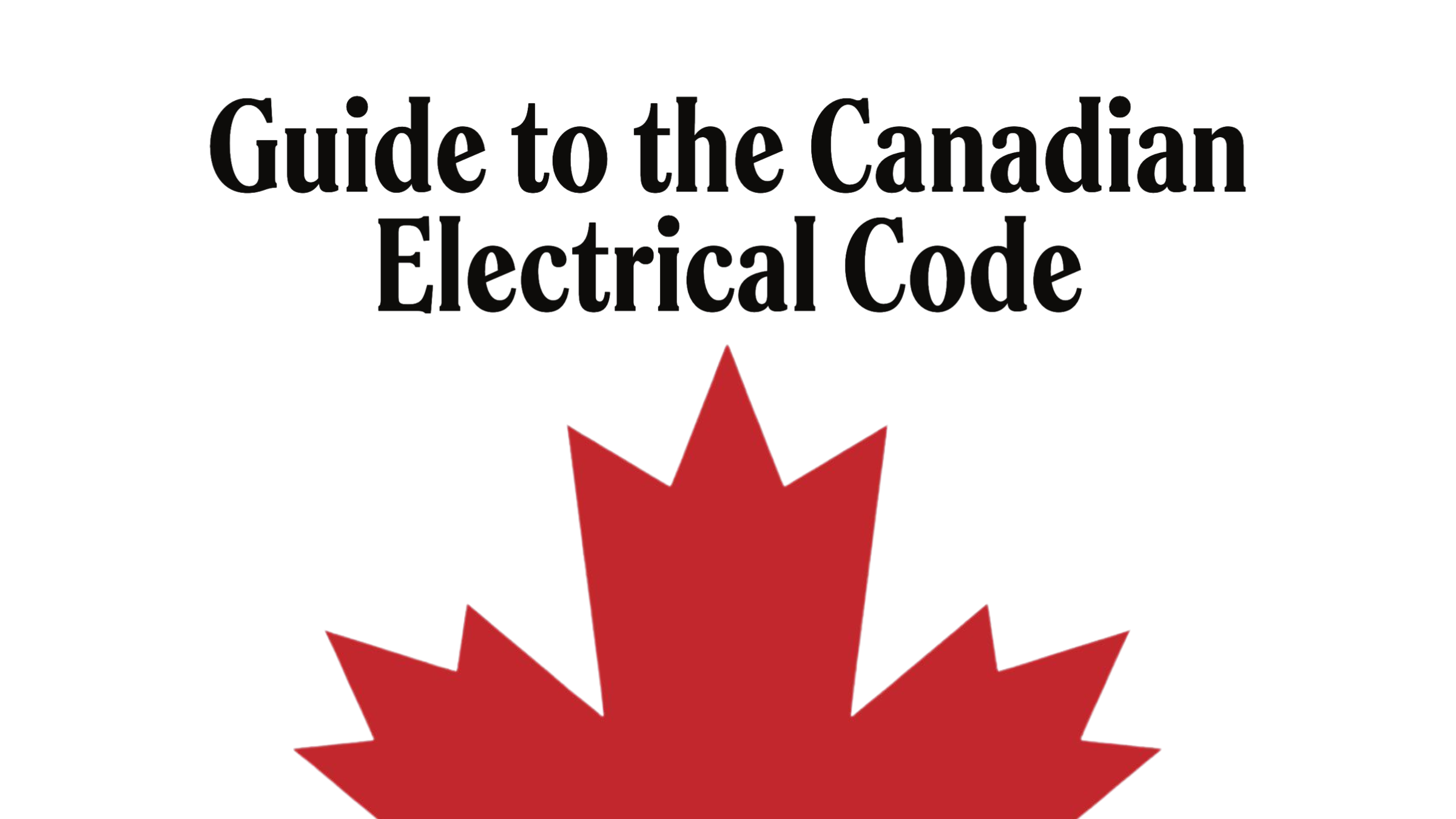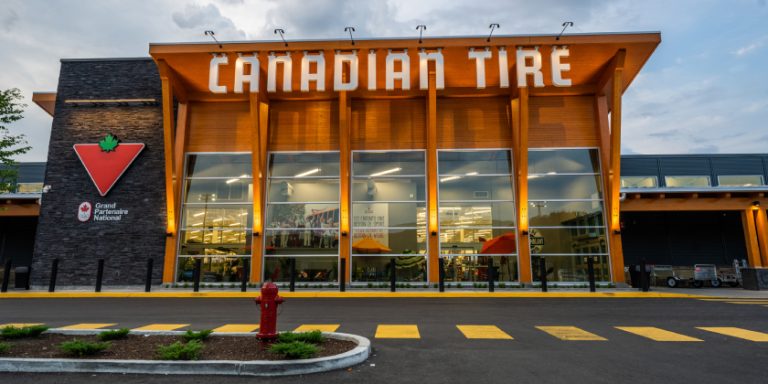Guide to the Canadian Electrical Code, Part 1, 25th Edition– A Road Map: Appendix J – Annex J18 – Part B

August 14, 2023
By William (Bill) Burr
(The 25th Edition of the CE-C, Part I, (C22.1-21) * is available from CSA Group. This discussion of Appendix J – Annex J18 B is based on the 25th edition).
The Code is a comprehensive document. Sometimes it can seem quite daunting to quickly find the information you need. This series of articles provides a guide to help users find their way through this critical document. This is not intended to replace the notes in Appendix B, or the explanations of individual requirements contained in the CEC Handbook** but will hopefully provide some help in navigating while reading the Code.
Appendix J – Annex J18 – Part B
Annex J18 is optionally permitted for use in additions, modifications, renovations or operation and maintenance of existing facilities employing the Division system of classification. The rules of Annex J18 are normative (mandatory) where used and amend or supplement other requirements of the Code. Additional informative (nonmandatory) information is contained in Annex JB. Due to the size of this Annex; it will be discussed in multiple parts.

Annex J18 is divided into four parts – General, Class I, Class II and Class III locations. Part A covered General requirements. This is Part B
Class I – Division I Locations
Rules J18-100 to J18-128 apply to installations in Class I, Division 1 locations.
Rule J18-100 requires that equipment installed in a Class I, Division 1 location be in accordance with Table 18.
Rule J18-102 requires that:
- transformers and electrical capacitors that do not contain a flammable liquid be installed in electrical equipment in compliance with Rule J18-100; and
- transformers and electrical capacitors containing a flammable liquid be installed in electrical equipment vaults in accordance with Rules 26-350 to 26-356 and have ventilation to ensure the continuous removal of hazardous gases or vapours, vent openings or vent ducts leading to a safe location outside the building containing the vault, vent openings and vent ducts with enough area to relieve pressure caused by explosions within the vault, every portion of a vent duct within the building is constructed of reinforced concrete, and no door or other connecting opening between the vault and the hazardous area.
Rule J18-104 requires meters, instruments, and relays, including kilowatt-hour meters, instrument transformers, resistors, rectifiers, and thermionic tubes, to be located outside the Class I, Division 1 hazardous location or comply with Rule J18-100.
Rule J18-106 outlines wiring methods, in Class I, Division 1 locations and requires:
- threaded rigid metal conduit with explosion-proof fittings or hazardous location cables with associated cable glands suitable for the application.
- explosion-proof boxes, fittings, and joints threaded for connection to conduit and cable glands,
- cables installed and supported to avoid tensile stress at the cable glands,
- explosion-proof type flexible fittings be used where necessary for flexible connections at motor and generator terminals and similar places; and
- intrinsically safe equipment and associated circuits designed and installed as intrinsically safe “i” or “ia” be as specified in Rule J18-066.
Rule J18-108 provides the requirements for sealing in Class I, Division 1 and specifies:
- an explosion seal be provided where a wiring system (conduit or cable) enters an explosion-proof enclosure which contains devices that produce ignition-capable arcs, or temperatures or is 53 trade size or larger.
- where a wiring system (conduit or cable) passes through a Division 1 area uninterrupted, and the termination points are in a Division 2 or non-hazardous location, or in conduit systems where the conduit enters an explosion-proof enclosure and the enclosure does not contain devices which produce ignition-capable arcs or temperatures or the enclosure is marked “Factory Sealed” or “Seal Not Required”, an explosion seal is not required.
- Explosion seals must be located as close as practicable to the enclosure or as marked on the enclosure, and for conduit systems no farther than 450 mm from the enclosure.
- Only explosion-proof unions, reducers, adapters, and elbows that are not larger than the trade size of the conduit are permitted between an explosion seal and an explosion-proof enclosure.
- Except as permitted by Rule 18-066 5), where a conduit system crosses a Division 1 boundary and terminates in the Division 1 area, an explosion seal must be installed in the conduit within the Division 1 location; or no more than 1 m external to the Division 1 boundary; and
- the conduit system must be uninterrupted between the explosion seal and the point of termination within the Division 1 location; and the point at which the conduit crosses the Division 1 boundary.
- A flammable fluid migration seal must be provided where a cable first terminates after entering the Division 1 area.
- Runs of cables, each having a continuous sheath, either metal or non-metal, shall be permitted to pass through a Class I, Division 1 location without seals.
Rule J18-110 requires that switches, motor controllers, circuit breakers, and fuses including push buttons, relays, and similar devices in Class I, Division 1 locations, be provided with enclosures complying with Rule J18-100.
Rule J18-112 requires that transformers, impedance coils, and resistors located in Class I, Division 1 used in conjunction with control equipment for motors, generators, and appliances, and any associated switching mechanism comply with Rule J18-100.
Rule J18-114 requires that motors, and generators, comply with Rule J18-100.
Rule J18-116 requires that Ignition systems for gas turbines comply with Rule J18-100.
Rule J18-118 specifies that:
- luminaires and portable lighting be complete assemblies marked for use in Class I locations and have the maximum wattage clearly marked,
- luminaires intended for portable use be complete assemblies,
- each luminaire be protected against physical damage by a suitable guard or by location, and
- pendant luminaires be suspended by and supplied through threaded rigid conduit stems, and threaded joints be provided with set screws or other effective means to prevent loosening, and for stems longer than 300 mm, be provided with:
- permanent and effective bracing against lateral displacement at a level not more than 300 mm above the lower end of the stem, or
- flexibility in the form of a fitting or flexible connector in compliance with Rule J18-100 situated not more than 300 mm from the point of attachment,
- luminaires be supported by boxes, box assemblies, and fittings in accordance with Rule J18-100.
Rule J18-120 requires that portable and fixed utilization equipment, including electrically heated and motor-driven equipment, comply with Rule J18-100, and that ground fault protection be provided to de-energize all normally ungrounded conductors of an electric heat tracing cable set, with the ground fault trip setting adjusted to allow normal operation of the heater.
Rule J18-122 requires that:
- flexible cords be used only for connection between a portable lamp, or other portable utilization equipment, and the fixed portion of its supply circuit and, be of the extra-hard-usage type, contain, a bonding conductor; and provided with glands marked for the class and group where the flexible cord enters a box, fitting, or enclosure of the explosion-proof type.
- flexible cord meeting the above requirements and protected from damage by location or by a suitable guard can also be used where fixed wiring methods cannot provide the degree of movement for fixed and mobile electrical utilization equipment.
Rule J18-124 specifies receptacles and attachment plugs be of the type providing for connection to the bonding conductor of the flexible cord and shall comply with Rule J18-100.
Rule J18-126 requires where condensed vapours or liquids may collect on or contact the insulation on conductors, such insulation be of a type intended for use under such conditions, or the insulation be protected by a sheath of lead or by other means intended for the purpose.
Rule J18-128 requires that signal, alarm, remote control, and communication systems apparatus and equipment comply with Rule J18-100; and all wiring comply with Rules J18-106 and J18-108.
Class I – Division 2 Locations
Rules J18-150 to J18-160 apply to installations in Class I, Division 2 locations.
Rule J18-150 specifies electrical equipment installed in a Class I, Division 2 location must be in accordance with Table 18 and Rule J18-052 and additionally allows:
- transformers, solenoids, coils, and similar electromagnetic devices which comply with the requirements of Rule J18-054.
- conduit and cables as specified in Rule J18-152.
- equipment which is installed in a Type 4 or 4X enclosure, or an IP65 or higher enclosure, and is non-sparking in normal operation, not used for heating purposes, and not otherwise provided for in Rule 18-150.
- fuses, which are used for the protection of equipment subject to overload during normal operation and are of the current-limiting, non-indicating, filled type; or of the current-limiting, indicating, filled type, constructed in a manner such that the blown fuse indication does not cause the fuse body to be penetrated, or short circuit protection only; or
- motors, generators, and other rotating electrical machines of the open or non-explosion-proof type that do not incorporate arcing, sparking, or heat-producing components, except those that comply with the requirements of Rule J18-100.
- The machines referred to above are permitted to contain anti-condensation heaters suitable for non-hazardous locations, provided that they do not use arcing or sparking components, do not use temperature-limiting controls, comply with the requirements of Rule J18-054 under normal operating conditions; and are marked on a separate nameplate on the machine with the maximum surface temperature of the heater in degrees Celsius; or a temperature code that indicates the maximum surface temperature.
- A machine referred to above that contains a sliding contact shaft bonding device suitable for non-hazardous locations may be used, provided that the device is used for the purpose of maintaining the rotor at ground potential, the potential discharge energy is determined to be non-incendive for the application, and the potential discharge energy calculation is documented and authenticated by the person assuming responsibility for the calculation.
- motors, generators, and other rotating electrical machines of the open or non-explosion-proof type that do not incorporate arcing, sparking, or heat-producing components except as permitted above, or arcing, sparking, or heat-producing components that comply with Rule J18-100.
Rule J18-152 outlines wiring methods for installations in Class I, Division 2 locations and specifies that:
- wiring methods be:
- threaded metal conduit,
- hazardous location cables,
- Type TC cable, installed in cable tray in accordance with Rule 12-2202,
- armoured cable with overall non-metallic jacket, such as TECK90, ACWU90, copper-sheathed RC90, or aluminum sheath RA90,
- armoured fire alarm and signal cable, such as FAS, FAS90, FAS105, FAS150, and FAS200.
- control and instrumentation cables with an interlocking metallic armour and a continuous jacket in control circuits (Type ACIC),
- Type CIC cable (non-armoured control and instrumentation cable) installed in cable tray in accordance with Rule 12-2202 (2), where the voltage rating of the cable is not less than 300 V, the circuit voltage is 150 V or less, and the circuit current is 5 A or less,
- rigid RTRC conduit Type XW, provided that associated boxes, fittings, and joints are marked with the suffix “–XW”, and the installation is performed in industrial establishments that are not accessible to the public and where only qualified persons service the installation,
- intrinsically safe or non-incendive wiring circuits installed in accordance with Rule J18-064, or
- liquid-tight flexible metal conduit and connectors, marked for heavy duty;
- explosion-proof, flameproof “d”, or flameproof “db” boxes, fittings, and joints be threaded for connection to conduit and cable glands.
- threaded joints that are required to be explosion-proof flameproof “d”, or flameproof “db” be either tapered or straight and have tapered threads with at least five fully engaged threads, and not use running threads, or straight threads in Groups IIA and IIB atmospheres have at least five fully engaged threads; and straight threads in Group IIC atmospheres, have at least eight fully engaged threads.
- Where thread forms differ between the equipment and the wiring system, adapters in accordance with Rule J18-150 be used.
- cables be installed and supported to avoid tensile stress at the cable glands.
- boxes, fittings, and joints need not be explosion-proof flameproof “d”, or flameproof “db”, except as required by the Rules in this Section.
- cable glands be compatible with the degree of ingress protection and explosion protection provided by the enclosure that the cable enters, where the area classification and environmental conditions require these degrees of protection.
Rule J18-154 specifies the requirements for sealing in Class I, Division 2 locations and requires that:
- Explosion seals be provided in a conduit system where the conduit enters an enclosure that is required to be explosion-proof flameproof “d”, or flameproof “db” and be located as close as practicable to the enclosure, or as marked on the enclosure but not farther than 450 mm from the enclosure, and 50 mm from the enclosure for field drilled entries.
- Flammable fluid migration seals for conduit shall be installed where the conduit leaves the Class I, Division 2 location with no box, coupling, or fitting in the conduit run between the seal and the point at which the conduit leaves the location, except that a rigid unbroken conduit that passes completely through a Class I, Division 2 area, with no fittings less than 300 mm beyond each boundary, need not be sealed,
- if the termination points of the unbroken conduit are in non-hazardous areas, or
- the conduit leaves a Class I, Division 2 location outdoors, in which case the seal may be located more than 300 mm beyond the Class I, Division 2 boundary if it is located on the conduit before the conduit enters an enclosure or building.
- only explosion-proof unions, couplings, reducers, and elbows that are not larger than the trade size of the conduit be permitted between the sealing fitting and an explosion-proof flameproof d”, or flameproof “db”, enclosure.
- explosion seals be provided in a cable system where the cable enters an enclosure required to be explosion-proof flameproof d”, or flameproof “db”, or the cable enters an enclosure not required to be explosion-proof or flameproof, and the other end of the cable terminates in a non-hazardous location in which a negative atmospheric pressure greater than 0.2 kPa exists.
- where a run of conduit enters an enclosure that is required to be explosion-proof flameproof d”, or flameproof “db”, every part of the conduit from the seal to that enclosure complies with Rule J18-106.
- runs of cables, each having a continuous sheath, either metal or non-metal, may pass through a Class I, Division 2 location without seals.
Rule J18-156 mandates that:
- luminaires be protected from physical damage by suitable guards or by location,
- pendant luminaires shall be suspended by threaded rigid conduit stems or other means specified by the manufacturer,
- where suspended pendant luminaires are by threaded rigid conduit stems longer than 300 mm they are provided with permanent and effective bracing against lateral displacement at a level up to 300 mm above the lower end of the stem or flexibility in the form of a suitable fitting or flexible connector located up to 300 mm from the point of attachment,
- portable lamps comply with Rule J18-118 (1) and (2).
Rule J18-158 states that the installation of fixed or portable electrically heated equipment in Class I, Division 2 locations complies with Rule j18-100.
Rule J18-160 governs the use of flexible cords in Class I, Division 2 locations and specifies:
- flexible cords may be used for connection between permanently mounted luminaires, portable lamps, or other portable equipment and supply circuits and be extra-hard-usage type, contain a bonding conductor and be provided with a sealing gland where entering an explosion-proof fitting or an enclosure.
- flexible cord may be used for parts of the circuit needing a degree of movement for fixed and mobile utilization equipment providing meets the above requirements and is protected from damage by location or by a suitable guard.
In the next Part C, we will be discussing Annex J18 of Appendix J, Class II locations.
Previous Installment:
Guide to the Canadian Electrical Code, Part 1, 25th Edition– A Road Map: Appendix J – Annex J18 – Part A
[i] Source: CSA C22.1:21, Canadian Electrical Code, Part 1 – Safety Standard for Electrical Installations. © 2021 Canadian Standards Association. Please visit Store – CSA Group or call 1-800-463-6727. With the permission of CSA Group, the material is reproduced from CSA Group standard CSA C22.1:21, Canadian Electrical Code, Part 1 – Safety Standard for Electrical Installations. This material is not the complete and official position of CSA Group on the referenced subject, which is represented solely by the Standard in its entirety. While use of the material has been authorized, CSA Group is not responsible for the manner in which the data are presented, nor for any representations and interpretations. No further reproduction is permitted. For more information or to purchase standard(s) from CSA Group, please visit Store – CSA Group or call 1-800-463-6727.

















